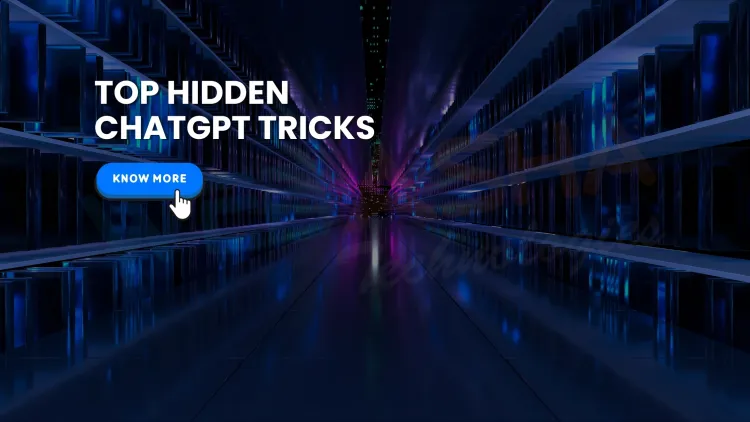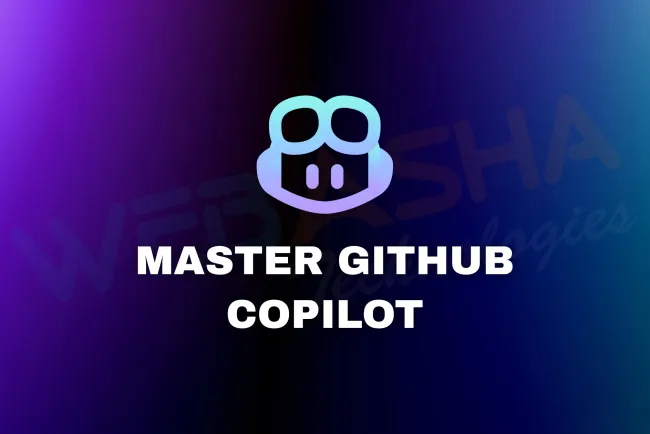What are the most useful hidden ChatGPT features in 2025 that users are not aware of?
Many users are familiar with ChatGPT's basic capabilities like answering questions and writing content. However, in 2025, several powerful hidden features—such as Custom GPTs, memory retention, file uploads, code interpretation, and real-time web browsing—are available that significantly boost productivity, creativity, and technical workflows. These lesser-known tools make ChatGPT a comprehensive assistant for coding, planning, automation, and education.

ChatGPT continues to evolve rapidly—and in 2025, it has become more powerful than ever. While most users are familiar with its basic chatting capabilities, there are numerous lesser-known features that significantly enhance productivity, creativity, and technical workflows.
In this blog, we'll explore 10 hidden ChatGPT features you probably aren’t using—but definitely should be. These functionalities not only improve the user experience but also unlock the full potential of ChatGPT in real-world tasks.
Why Should You Explore ChatGPT’s Hidden Features?
In 2025, ChatGPT isn't just a chatbot. It’s an AI-powered assistant, code editor, planner, language tutor, and even an image and file handler. OpenAI has embedded features that go far beyond answering questions—some are tucked behind simple prompts, others behind the “pro” subscription plan or lab tools.
Unlocking these can help you:
-
Save time on repetitive tasks
-
Generate creative and technical content more efficiently
-
Integrate AI deeper into your workflow
1. Custom GPTs for Specialized Tasks
Did you know you can create your own personalized version of ChatGPT?
Custom GPTs allow users to:
-
Define personality traits
-
Upload specific data or files
-
Add custom instructions for tailored behavior
This is incredibly useful for students, developers, businesses, or writers looking for a niche assistant.
Use it for: building a legal writing assistant, cybersecurity analyst bot, or even a workout planner.
2. Memory Feature (New in 2025)
The Memory feature lets ChatGPT remember things you’ve told it—like your name, preferred writing style, or favorite topics.
-
You can now manage this memory in settings.
-
Memory improves with usage and is editable anytime.
Use it to: avoid repeating yourself and build more consistent conversations across sessions.
3. File Uploads and Advanced File Analysis
With the ability to upload PDFs, DOCXs, and even spreadsheets, ChatGPT can read, summarize, and extract data for you.
-
Ideal for students, analysts, and researchers
-
You can ask ChatGPT to summarize a 50-page PDF in seconds
Use it for: report summaries, contract analysis, or comparing Excel sheets.
4. Code Interpreter (a.k.a. Advanced Data Analysis)
This “hidden” tool is a game-changer for data scientists and coders.
It can:
-
Write and debug Python code
-
Run calculations
-
Plot graphs
-
Analyze CSV files
Use it for: data cleaning, number crunching, or generating Python visuals on the fly.
5. Voice Mode (Mobile App Feature)
ChatGPT now supports voice conversations on mobile—like Siri, but smarter.
-
You can talk to ChatGPT in real-time.
-
Choose from multiple voice personalities.
Use it for: hands-free note-taking, brainstorming while walking, or even language practice.
6. Image Understanding Capabilities
Need help with a screenshot or diagram?
-
Just upload the image, and ChatGPT can interpret charts, UI designs, handwriting, and more.
Use it for: technical diagram explanations, meme descriptions, or homework help involving images.
7. Browser Tool for Real-Time Web Access (Pro Users)
ChatGPT can now search the web live, bypassing its usual knowledge cut-off.
-
Ideal for getting up-to-date information
-
Can fetch sources, read articles, and summarize them
Use it for: current events, research citations, or pricing info.
8. Python Sandbox for Educational Practice
This feature gives users a safe space to learn Python coding with real-time AI support.
-
You write code → ChatGPT checks and explains it
-
Excellent for beginners and intermediate learners
Use it for: daily coding exercises, logic building, or debugging assistance.
9. Multi-Turn Memory for Projects
Working on a long-term project?
-
ChatGPT can remember the context of your project and help you continue where you left off.
Use it for: writing books, building websites, or tracking goals across multiple sessions.
10. Integration with Other Tools via APIs
With ChatGPT Plus, you can connect APIs and external tools:
-
Connect with Google Sheets
-
Automate workflows with Zapier
-
Send output to Notion or Slack
Use it for: task automation, business dashboards, and data reporting. Hidden ChatGPT Features and Their Benefits
| Feature | Description | Use Case |
|---|---|---|
| Custom GPTs | Personalized AI assistants | Industry-specific bots |
| Memory | Remembers your preferences | Consistent writing or brand tone |
| File Uploads | Reads and analyzes documents and spreadsheets | Reports, contracts, Excel summaries |
| Code Interpreter | Python execution and graphing support | Data science, math, automation |
| Voice Mode | Talk to ChatGPT via app | On-the-go brainstorming, dictation |
| Image Understanding | AI analysis of images and diagrams | Charts, UI screenshots, scanned notes |
| Browser Tool | Live web browsing and citation retrieval | Real-time info and news summaries |
| Python Sandbox | Safe coding environment with feedback | Learning and debugging code |
| Multi-Turn Memory | Continues conversations across sessions | Long-form writing, project continuity |
| Tool Integration via API | Connects with external platforms | Automation, dashboards, live integrations |
Conclusion
While most users only scratch the surface of what ChatGPT can do, these 10 hidden features make it a productivity powerhouse in 2025. Whether you're a developer, student, marketer, or just curious, exploring these tools will dramatically enhance how you interact with AI.
OpenAI continues to expand ChatGPT’s capabilities—so keep experimenting, customizing, and integrating.
FAQs
What are some hidden features in ChatGPT Pro?
ChatGPT Pro unlocks hidden tools like code interpreter, file uploads, memory, image analysis, and a live browser tool for real-time web data.
How do I access ChatGPT’s Custom GPTs?
You can create or explore Custom GPTs by clicking on “Explore GPTs” inside ChatGPT (Pro plan only). You can upload data and personalize the assistant.
Can ChatGPT read PDF or Excel files?
Yes, ChatGPT can analyze PDFs, DOCX, CSV, and Excel files when uploaded. It can summarize content, extract data, or provide insights.
Does ChatGPT remember past conversations?
In 2025, the memory feature remembers your name, preferences, and style. You can enable or disable memory from the settings.
Can ChatGPT generate Python graphs?
Yes, with the Advanced Data Analysis (code interpreter), ChatGPT can create Python scripts and graphs from data you provide.
Is ChatGPT voice-enabled?
Yes, ChatGPT’s mobile app supports real-time voice conversations using various voice profiles.
How does ChatGPT handle images?
You can upload diagrams, screenshots, or photos, and ChatGPT can describe or analyze them.
Can ChatGPT access live web data?
Pro users can use the browser tool to access current news, search the web, and summarize real-time content.
Can I learn coding with ChatGPT?
Absolutely. The Python sandbox lets you learn, practice, and debug code with step-by-step explanations.
How to continue a project across multiple ChatGPT sessions?
With memory enabled, ChatGPT can remember your ongoing projects and help you resume from where you left off.
Are ChatGPT’s features available offline?
Voice and memory work offline in limited mode, but advanced tools like browser and file analysis need internet.
What is the code interpreter used for?
It runs Python code to analyze data, solve math, generate visuals, and automate logic-based tasks.
How do I enable file upload in ChatGPT?
File uploads are enabled by default in Pro plans. Just click the paperclip icon to attach documents.
Can I connect ChatGPT to Google Sheets or Notion?
Yes, with API integrations or third-party tools like Zapier, you can automate tasks between ChatGPT and other apps.
Is ChatGPT good for long-form writing?
Yes. With memory and prompt chaining, you can write books, technical papers, or blogs across multiple sessions.
What’s the use of voice mode in ChatGPT?
Voice mode allows you to talk naturally with ChatGPT. It’s helpful for accessibility, brainstorming, or hands-free tasks.
Can ChatGPT work with APIs in 2025?
Yes, developers can now use ChatGPT’s API or connect other APIs to fetch and process data inside custom GPTs.
How do I manage what ChatGPT remembers?
You can view, edit, or delete memory from the settings page under the "Personalization" section.
Does ChatGPT recognize handwriting in images?
Yes, the image understanding feature can interpret handwriting, scanned documents, or whiteboard content.
What’s the difference between a normal chat and Custom GPT?
Custom GPTs are pre-configured with specific knowledge, behavior, and tools for targeted use cases.
Can ChatGPT help me automate tasks?
Yes. Using tool integrations, it can automate reports, data pulls, and summaries with minimal human input.
What kind of graphs can ChatGPT generate?
Line graphs, bar charts, scatter plots, pie charts, and more using Matplotlib or Seaborn in Python.
Can I use ChatGPT for school or college projects?
Definitely. From research and writing to coding and summarizing papers, ChatGPT supports multiple educational use cases.
How often does ChatGPT get updated?
OpenAI frequently updates the model and features, especially for Pro users, including security patches and tool enhancements.
Is ChatGPT safe to use with sensitive data?
Avoid sharing confidential information. While ChatGPT is secure, it's not recommended for PII or financial records.
What does ChatGPT’s file analysis include?
It can read content, summarize documents, extract tables, and visualize data from PDFs and spreadsheets.
Can I share my Custom GPTs?
Yes, you can share Custom GPT links with others or keep them private depending on your needs.
What is the AI sandbox used for?
It’s an environment for experimenting with prompts, testing model responses, and learning how AI works safely.
Can ChatGPT read programming errors?
Yes, it can read your code, find bugs, explain error messages, and offer working solutions.
Is ChatGPT’s voice mode multilingual?
Yes. It supports multiple languages and can switch automatically based on your spoken input.
Where can I find updates about ChatGPT’s new tools?
Visit OpenAI’s official blog or follow ChatGPT's “What’s new” updates in the app menu.














![Top 10 Ethical Hackers in the World [2025]](https://www.webasha.com/blog/uploads/images/202408/image_100x75_66c2f983c207b.webp)








